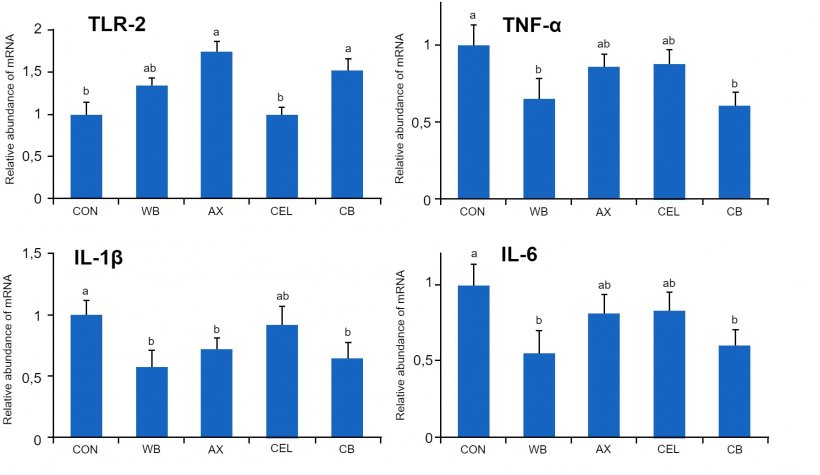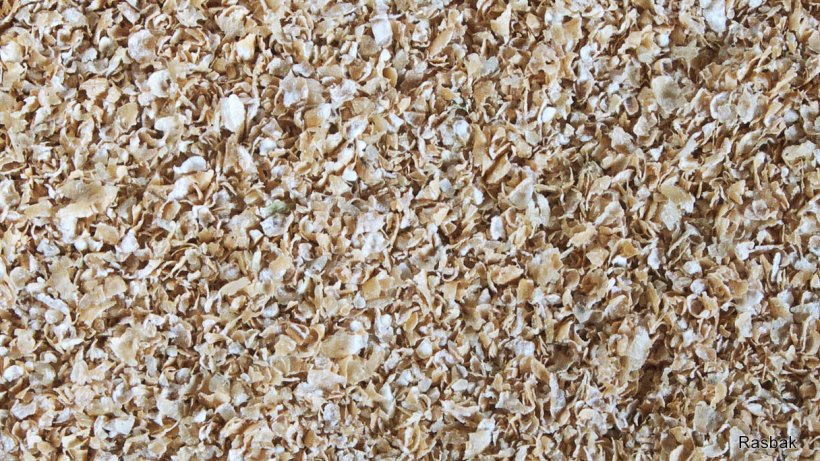The term "intestinal health" has become one of the most used phrases in the field of pig nutrition, especially in weaned pigs. In recent years it has been the subject of numerous articles and reviews. Certainly one of the most precise and, at the same time, generic definition of "intestinal health" has been recently stated by Pluske et al. (2018) as: "a generalized condition of homeostasis in the gastrointestinal tract with respect to its overall structure and function". Thus, it is understood that intestinal health in pigs can be impaired even in the absence of gastrointestinal tract infections . A clear example of compromised intestinal health, without being necessarily due to an infection, occurs after weaning. Stressors associated with this stage of a piglet's life inevitably cause changes in the structure and function of its gastrointestinal tract, contributing to a chronic inflammatory state of the intestine as a result of the innate immune system's response to those factors. It is therefore a sterile type of inflammation that has often been confused with a pathological inflammation.
Nowadays, the heterogeneous pathogenesis of this type of sterile inflammations is much better known, with numerous additives and substitutes of different origins and efficacy offered to alleviate the problems caused by these inflammations inevitably associated with the weaning of piglets. Likewise, there is growing attention to the role that components of the basic diet can play in the genesis, as well as in the prevention, of this type of exacerbated immune response during weaning. For example, a recent review (Humphrey et al., 2019) of practical nutritional strategies to mitigate intestinal inflammations in weaned piglets emphasizes the importance of both lipids and dietary protein in triggering such inflammations. Thus, as these authors indicate, the fatty acids and monoglycerides derived from the digestion of dietary fat are potent stimulators of glucagon-like peptide-1 (GLP-1) secretions by entero-endocrine cells, a molecule with a great anti-inflammatory action in the intestine. On the other hand, it is well known that highly digestible protein sources in the diet are effectively digested by piglets, reducing the amount of protein that passes to the large intestine, which represents an excellent substrate for fermentation by certain pathogenic bacteria. Consequently, such protein sources help to mitigate the inflammatory processes derived from such fermentation.

However, the role that fiber can play in the piglet diet, to prevent post-weaning inflammation is still quite unknown and therefore the use of fiber sources to regulate the innate immune response on a practical level is not well developed.
Articles previously published on pig333.com (Molist, 2016; Cerisuelo, 2018) and by well-known scientists (Berrocoso et al., 2015), have comprehensively addressed the effect of dietary fiber on production performance and digestibility in piglets as well as its influence on intestinal motility, its possible prebiotic role, and the effect of inert and fermentable fiber on the concentration of fatty acids in the colon. However, dietary fiber can also have a clear effect on the immune response of piglets at intestinal level, which should be considered in the framework of strategies to alleviate enteric disturbances after weaning.
The study of the effect of different fiber components of wheat bran in the diet of weaned piglets on the gene expression of different traits related to intestinal inflammation has been the aim of a collaboration between Ghent University in Belgium and Sichuan Agricultural University in China (Chen et al., 2016). In this study, newly weaned piglets were randomly assigned to five dietary treatments: a basal control diet without fiber components (CON), diet supplemented with 10% wheat bran (WB), diet supplemented with an amount of arabinoxylanes equivalent to that provided by 10% wheat bran (AX), diet supplemented with an amount of cellulose equivalent to that provided by 10% wheat bran (CEL) and a diet supplemented with the same amounts of arabinoxylanes and cellulose together (CB).
Gene expression of TLR-2 receptors was higher in the AX and CB piglet groups compared to the CON group as shown by the relative abundance of mRNA (Figure 1). TLR-2 receptors are associated with an anti-inflammatory effect and stability of tight junctions between enterocytes and, consequently, with improved gut health. Conversely, compared to the CON group, gene expression of the pro-inflammatory cytokines TN-α and IL-6 was lower in animals that had received diets containing wheat bran (WB) and that containing both arabinoxylans and cellulose (CB), indicating an inhibitory effect of inflammation of these two fiber components (Figure 1). Finally, pro-inflammatory cytokine IL-1β was only downregulated in piglets that had received all the components of bran (WB) in the diet (Figure 2).

Figure 1. Effect of different dietary fiber sources on gene expression of TLR-2 receptors and pro-inflammatory cytokines in the intestine of weaned piglets. CON: control diet without fiber components WB: diet supplemented with 10% wheat bran AX: diet supplemented with an amount of arabinoxylanes equivalent to that provided by 10% wheat bran CEL: diet supplemented with an amount of cellulose equivalent to that provided by 10% wheat bran CB: diet supplemented with the same amounts of arabinoxylanes and cellulose together. Means with different letters differ statistically significantly (p<0.05). Source: Chen et al., 2016
In summary, the results of this study show the anti-inflammatory effect of some fiber components of the diet after weaning. New research is needed to discern the different modes of action responsible for this anti-inflammatory effect, such as the production of certain fatty acids like butyric acid or the interaction of certain epithelial receptors with bacteria that benefit from a greater supply of fiber in the diet.
In any case, on a practical level, it is worth considering the anti-inflammatory effect of certain high fiber ingredients within the framework of the new strategies to alleviate the enteric problems in weaned piglets, in the absence of the use of high levels of zinc oxide.






